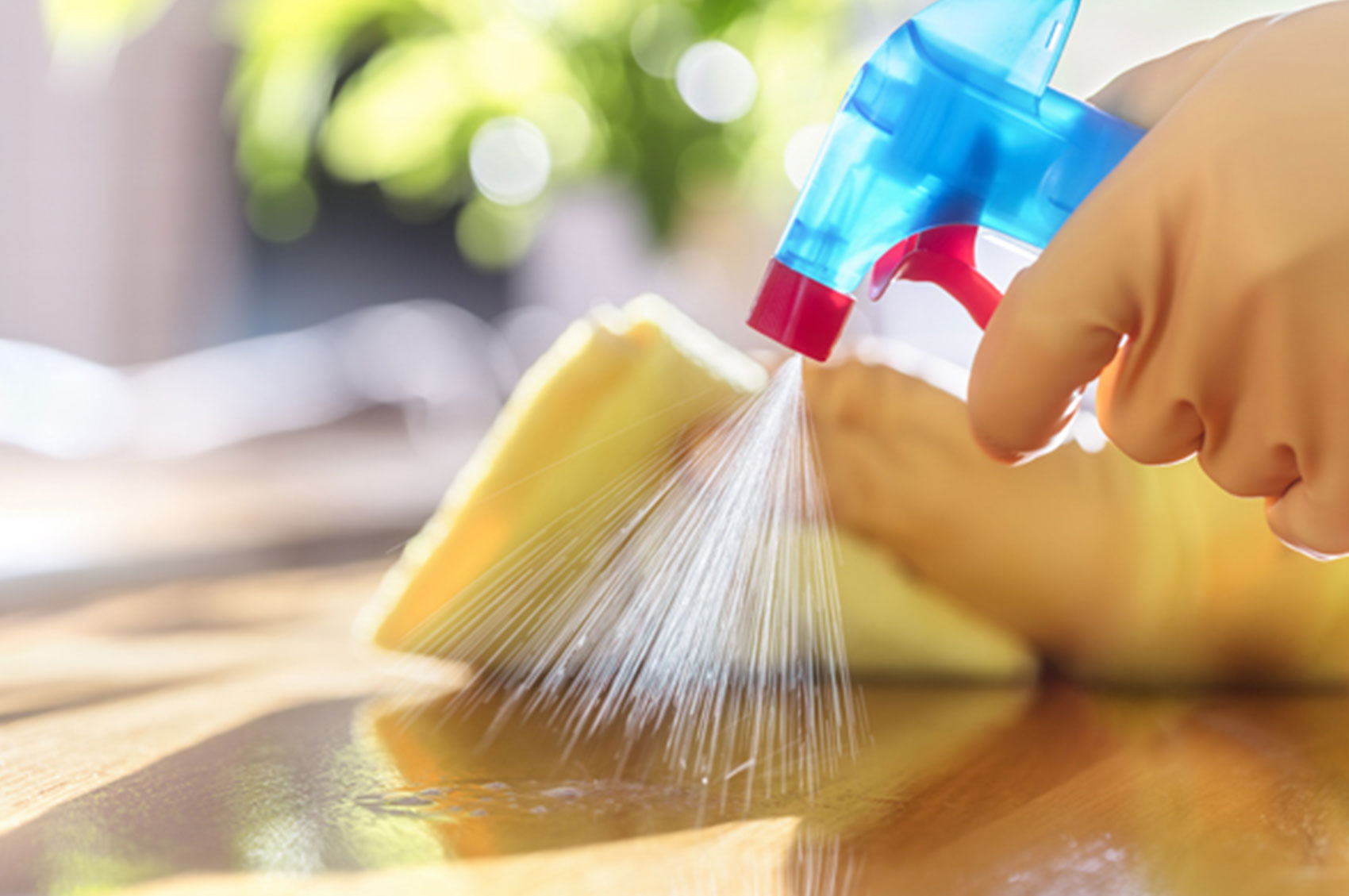
Disinfecting your facility if someone is sick
The Centers for Disease Control and Prevention has published the following recommendations to help promote safety and wellbeing at your work facility.
- Close off areas used by the sick person.
- Open outside doors and windows to increase air circulation in the area. Wait 24 hours (or as long as possible) before you clean or disinfect.
- Clean and disinfect all areas used by the sick person, such as offices, bathrooms, common areas, shared electronic equipment like tablets, touch screens, keyboards, remote controls, and ATM machines.
When cleaning
- Wear disposable gloves and gowns for all tasks in the cleaning process, including handling trash.
- Additional personal protective equipment (PPE) might be required based on the cleaning/disinfectant products being used and whether there is a risk of splash.
- Gloves and gowns should be removed carefully to avoid contamination of the wearer and the surrounding area.
- Wash your hands often with soap and water for 20 seconds.
- Always wash immediately after removing gloves and after contact with an ill person.
- Hand sanitizer: If soap and water are not available and hands are not visibly dirty, an alcohol-based hand sanitizer that contains at least 60% alcohol may be used. However, if hands are visibly dirty, always wash hands with soap and water.
- Additional key times to wash hands include:
- After blowing one’s nose, coughing, or sneezing.
- After using the restroom.
- Before eating or preparing food.
- After contact with animals or pets.
- Before and after providing routine care for another person who needs assistance (e.g., a child).
For managers
- Educate workers performing cleaning, laundry, and trash pick-up to recognize the symptoms of COVID-19.
- Provide instructions on what to do if they develop symptoms within 14 days after their last possible exposure to the virus.
- Develop policies for worker protection and provide training to all cleaning staff on site prior to providing cleaning tasks.
- Training should include when to use PPE, what PPE is necessary, how to properly don (put on), use, and doff (take off) PPE, and how to properly dispose of PPE.
- Ensure workers are trained on the hazards of the cleaning chemicals used in the workplace in accordance with OSHA’s Hazard Communication standard (29 CFR 1910.1200).
- Comply with OSHA’s standards on Bloodborne Pathogens (29 CFR 1910.1030), including proper disposal of regulated waste, and PPE (29 CFR 1910.132).
How to clean and disinfect
Wear disposable gloves to clean and disinfect.
Clean
- Clean surfaces using soap and water. Practice routine cleaning of frequently touched surfaces.
- High touch surfaces include:
Tables, doorknobs, light switches, countertops, handles, desks, phones, keyboards, toilets, faucets, sinks, etc.
- High touch surfaces include:
Disinfect
- Use diluted household bleach solutions if appropriate for the surface. Check to ensure the product is not past its expiration date. Unexpired household bleach will be effective against coronaviruses when properly diluted.
Follow manufacturer’s instructions for application and proper ventilation. Never mix household bleach with ammonia or any other cleanser.
To make a bleach solution, mix:
- 5 tablespoons (1/3rd cup) bleach per gallon of water
OR
- 4 teaspoons bleach per quart of water
- Alcohol solutions with at least 70% alcohol.
- Household cleaners and disinfectants: Clean the area or item with soap and water or another detergent if it is dirty. Then, use a household disinfectant.
Follow the instructions on the label to ensure safe and effective use of the product.
Many products recommend:
- Keeping the surface wet for several minutes to ensure germs are killed.
- Precautions such as wearing gloves and making sure you have good ventilation during use of the product.
Most EPA-registered household disinfectants should be effective.
Soft surfaces
For soft surfaces such as carpeted floor, rugs, and drapes
- Clean the surface using soap and water or with cleaners appropriate for use on these surfaces.
- Launder items (if possible) according to the manufacturer’s instructions.Use the warmest appropriate water setting and dry items completely.
OR
- Disinfect with an EPA-registered household disinfectant. These disinfectants meet EPA’s criteria for use against COVID-19.
Electronics
For electronics, such as tablets, touch screens, keyboards, remote controls, and ATM machines
- Consider putting a wipeable cover on electronics.
- Follow manufacturer’s instruction for cleaning and dinfecting.
- If no guidance, use alcohol-based wipes or sprays containing at least 70% alcohol. Dry surface thoroughly.
Laundry
For clothing, towels, linens and other items
- Wear disposable gloves.
- Wash hands with soap and water as soon as you remove the gloves.
- Do not shake dirty laundry.
- Launder items according to the manufacturer’s instructions. Use the warmest appropriate water setting and dry items completely.
- Dirty laundry from an ill person can be washed with other people’s items.
- Clean and disinfect clothes hampers according to guidance above for surfaces.
For facilities that house people overnight:
- Follow CDC’s guidance for colleges and universities. Work with state and local health officials to determine the best way to isolate people who are sick and if temporary housing is needed.
- For guidance on cleaning and disinfecting a sick person’s bedroom/bathroom, review CDC’s guidance on disinfecting your home if someone is sick.
This material is provided for informational purposes only and does not provide any coverage or guarantee loss prevention. The examples in this material are provided as hypothetical and for illustration purposes only. The Hanover Insurance Company and its affiliates and subsidiaries (“The Hanover”) specifically disclaim any warranty or representation that acceptance of any recommendations contained herein will make any premises, or operation safe or in compliance with any law or regulation. By providing this information to you, The Hanover does not assume (and specifically disclaims) any duty, undertaking or responsibility to you. The decision to accept or implement any recommendation(s) or advice contained in this material must be made by you.

